Creative Ideas for Moon Gardens: Inspiring Ways to Design a Magical Nighttime Sanctuary
The sun sets. Your garden fades to shades of grey and black. But then, the moon rises. Suddenly, a transformation happens. White flowers seem to float in the darkness. Silver leaves shimmer with borrowed light. The air fills with a sweet, mysterious scent. Everything feels quiet. Magical. Now, imagine if your garden could become even more enchanting at night than during the day?
It can. And it is not hard. You just need a different way of thinking about your outdoor space. A way that invites the magic of moonlight into your yard. And it is easier than you might imagine.

What is a Moon Garden?
A moon garden is a space designed to be enjoyed after dark. It is a garden that comes alive under the stars. The idea is not new. For centuries, people have created gardens for nighttime. Ancient cultures in Persia and Japan knew the peace of a moonlit courtyard. They chose plants and features that looked best in the soft glow of the moon. Today, we are rediscovering this wonderful concept.
So, what makes it special? These gardens are filled with specific plants and decor. You choose flowers that are white or have pale colors. You select plants with silvery or grey foliage. And you think about scent. Many of the best plants for a moon garden release their perfume only at night. It is a complete sensory experience. Your garden becomes a place of peace and wonder, long after the sun has disappeared.
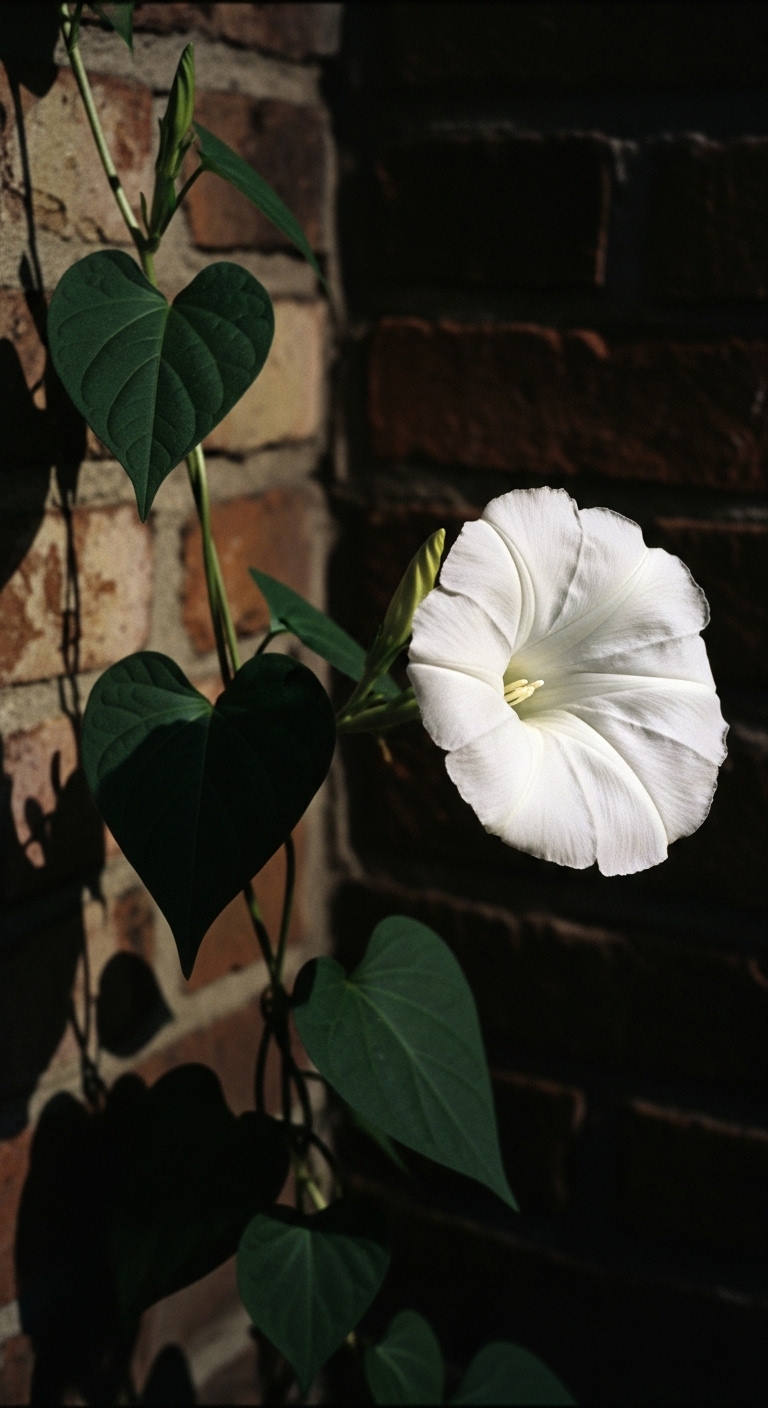
Why Moon Gardens are Increasingly Popular
Our lives are busy. We work. We go to school. We often don’t get home until the sun is setting. It can feel like we miss the chance to enjoy our own backyards. Moon gardens solve this problem. They give us a beautiful outdoor space to use in the evening. It is a place to unwind and relax after a long day. A spot to disconnect from screens and reconnect with nature.
You might have seen them online. Beautiful pictures of glowing gardens are showing up on Pinterest and Instagram. People are sharing their unique nighttime spaces. The trend speaks to a bigger need. We want more calm in our lives. We want to find quiet moments. A garden that shines in the moonlight offers exactly that. It extends our living space into the night. And it provides a peaceful escape right outside our door.
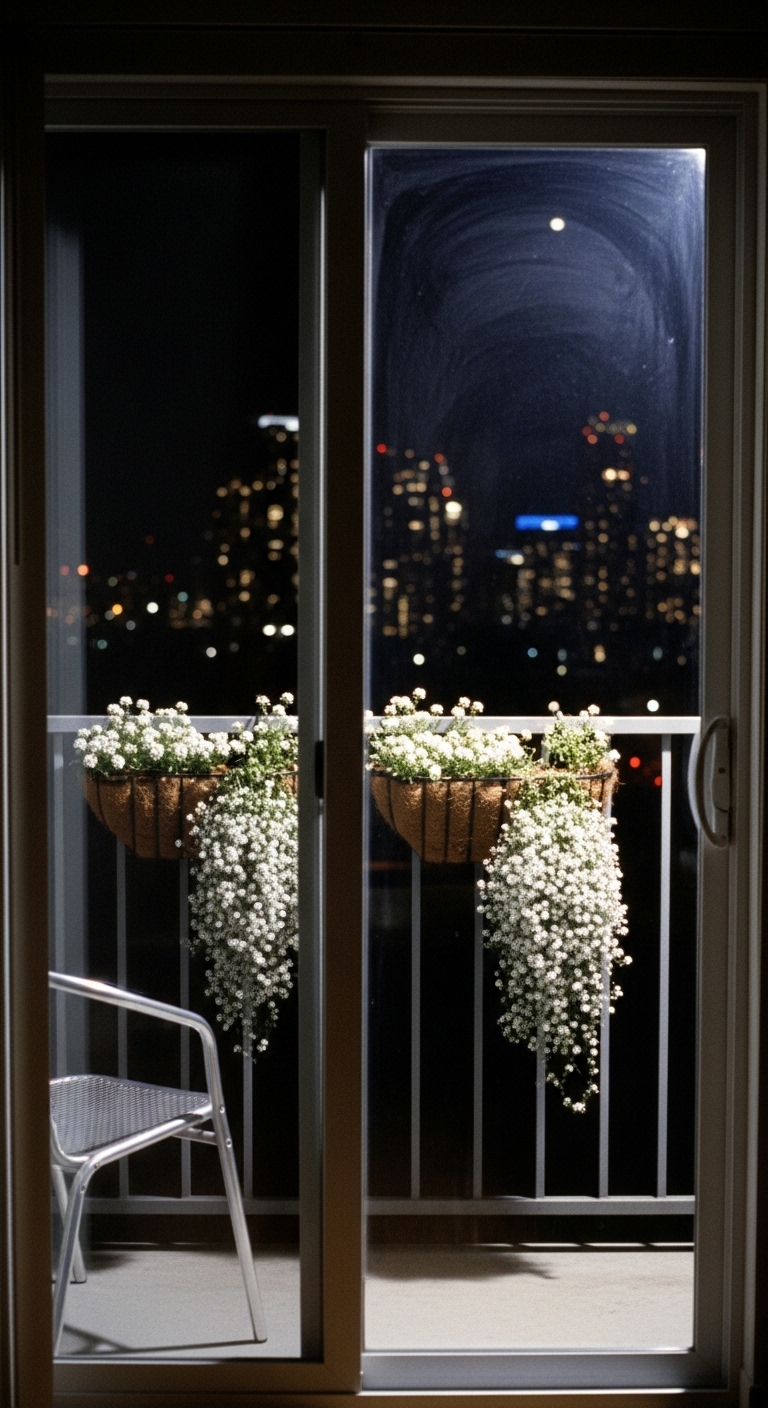
Capturing the Moon Garden Aesthetic
Creating the look and feel of a moon garden is all about three things. Color, senses, and light. Get these right, and you will create a truly magical space. The key is to think about how things will look and feel in low light. Some of the brightest daytime plants simply disappear at night. But others begin to shine.
The Power of Pale Colors
The color palette is the foundation. You want plants that reflect moonlight, not absorb it. Think white, cream, pale yellow, and soft pink. These colors will appear to glow in the dark. And do not forget about foliage. Plants with silver or grey leaves are superstars in a moon garden. Their leaves shimmer and catch every bit of available light. Pale-colored plants create the luminous effect that defines this garden style.
Engaging All the Senses
A moon garden is more than just what you see. Fragrance is incredibly important. Many night-blooming plants have the most amazing scents. Jasmine, moonflower, and nicotiana release their sweet perfume as dusk falls. The fragrance hangs in the cool night air. Texture also plays a part. Plants with fuzzy leaves, like lamb’s ear, look soft and touchable in the moonlight. The sound of ornamental grasses rustling in a gentle breeze adds another layer to the experience.
Reflection and Soft Light
Amplify the moonlight with reflective surfaces. A simple gazing ball can look like a tiny moon sitting in your garden bed. A small, still pool of water will mirror the sky above. Even light-colored gravel or white stepping stones will help bounce light around the space. When you do add artificial light, keep it gentle. Use soft lighting, not harsh floodlights. Solar-powered stake lights, fairy lights draped in a shrub, or a few simple lanterns create a gentle glow. The goal is to support the moonlight, not overpower it.
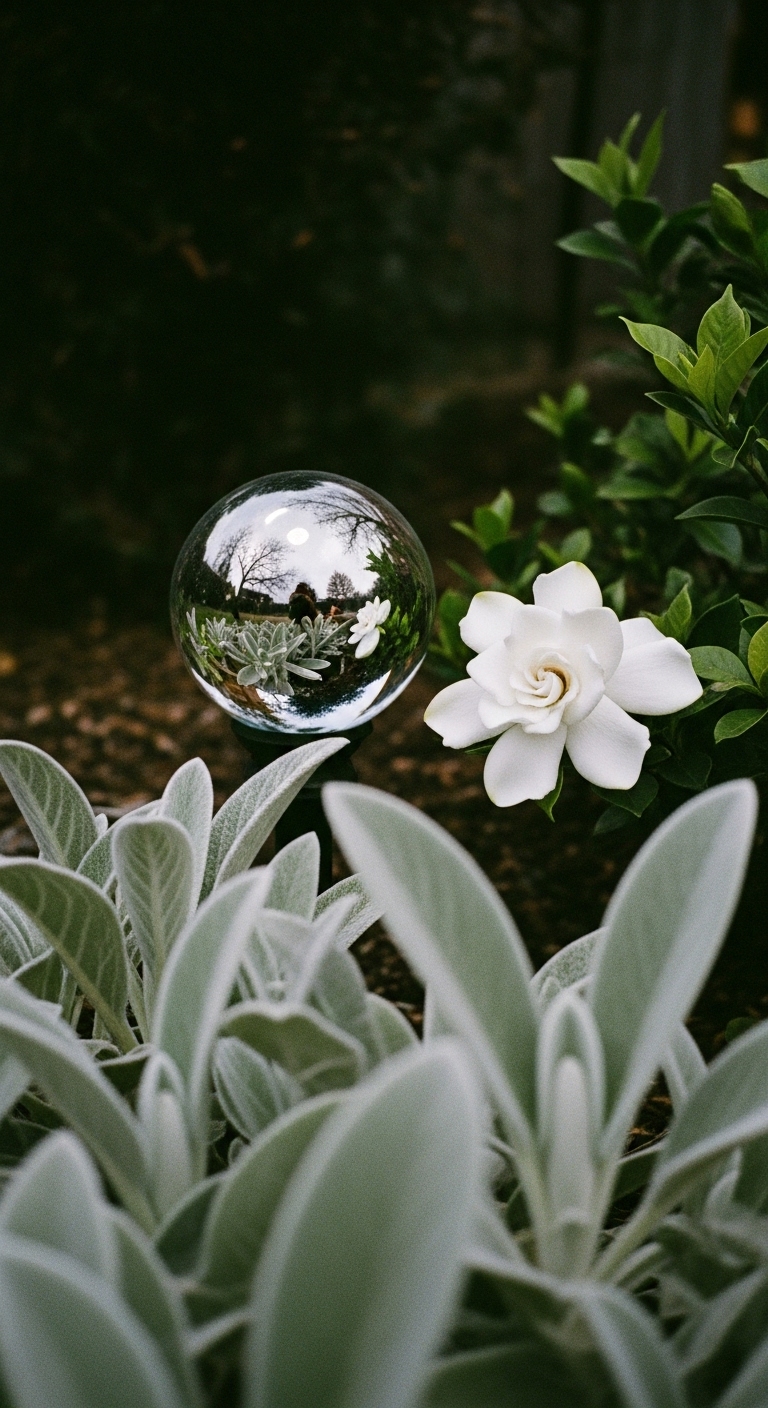
Creative Moon Garden Design Ideas
Now you know the basic ingredients. So let’s have some fun. Your garden is a canvas. And the moonlight is your special paint. You can create almost any style you want. A modern minimalist patio. A wild, romantic cottage border. Or even a funky, artistic space. Here are some creative ideas to spark your imagination. Feel free to mix and match them. Your perfect nighttime sanctuary is waiting.
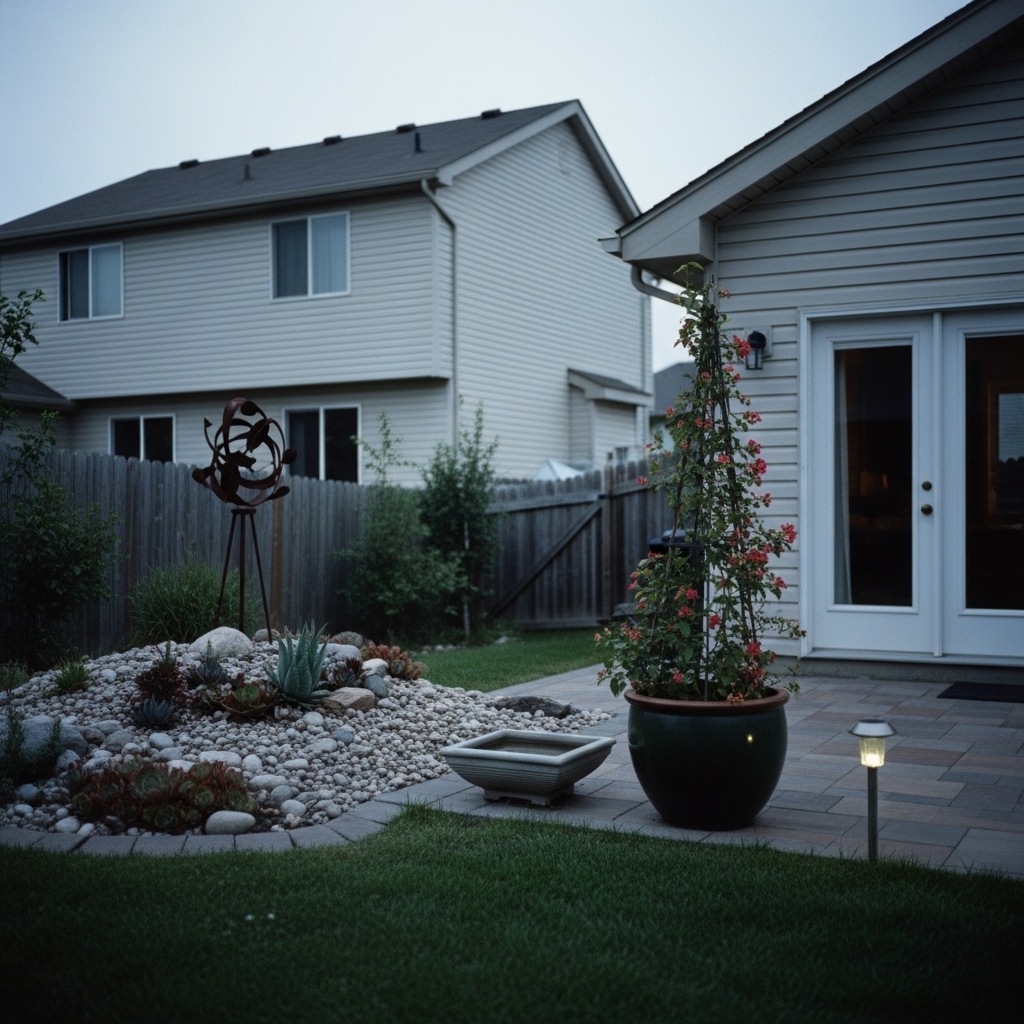
1. Luminescent Succulent Landscape
Succulents are not just for sunny deserts. Many of them take on a strange, beautiful glow at night. Their fleshy leaves and geometric shapes look otherworldly in the moonlight. Think about creating a rock garden filled with these amazing plants. It is a low-maintenance and very striking option. A simple design can have a huge impact.
Look for succulents with a pale or silvery coating. The ghost plant, with its powdery, lavender-grey leaves, is a perfect choice. It truly seems to radiate light. Many echeverias have a similar dusty coating that catches the moon. Arrange them among different sizes of pale stones and light-colored gravel. The combination of soft plant shapes and hard rocks creates a fascinating contrast. And it will look stunning year-round.
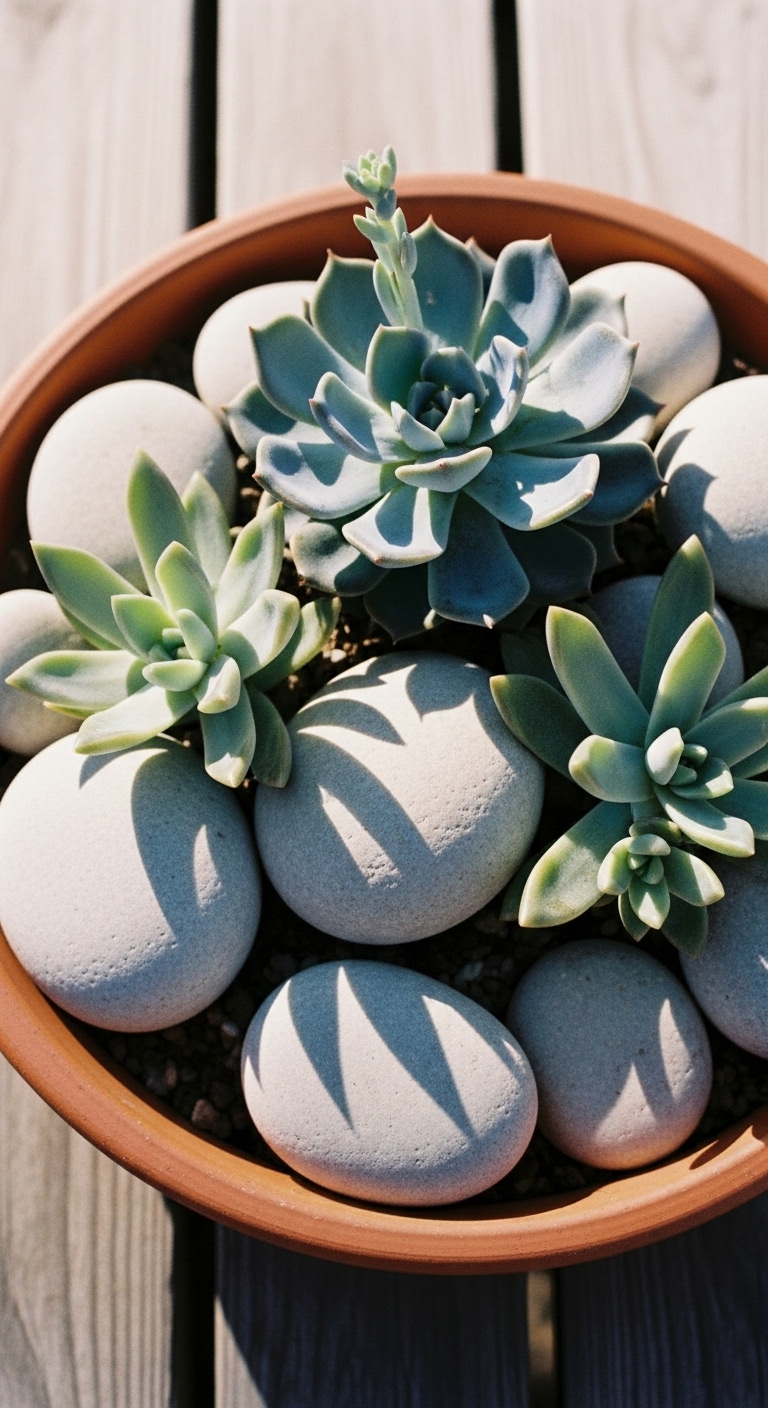
2. Monochromatic Moon Balcony
You do not need a big yard to have a moon garden. A small balcony or patio can become a magical retreat. The secret is to think vertically. Use vertical gardening techniques to make the most of your space. Hanging containers, wall-mounted planters, and railing boxes can hold a surprising number of plants. Sticking to a simple color scheme makes it feel bigger.
For a clean, modern look, go all-white. Plant cascading white alyssum in hanging baskets. Its honey-like scent will drift down on warm evenings. Use dusty miller for its bright, silvery-white foliage. It provides a beautiful texture and glows brightly. In a larger pot, you could plant a single white verbena. A simple, elegant display is all you need to transform a tiny space into a personal moonlit haven.

3. Reflective Water Moonscape
Nothing captures moonlight quite like water. Adding a water feature is one of the most powerful ways to enhance your nighttime garden. It does not have to be a large, expensive pond. A simple black basin filled with water will do the trick. It will create a perfect, dark mirror to reflect the moon and stars. The stillness can bring a deep sense of peace to your garden.
Plant around your water feature to soften its edges. White calla lilies are an elegant choice. Their sleek, sculptural flowers look amazing next to water. The fuzzy, silver leaves of lamb’s ear can trail down to the water’s edge. And for a classic look, white irises standing tall will provide beautiful reflections. The combination of glowing plants and shimmering water is truly enchanting.
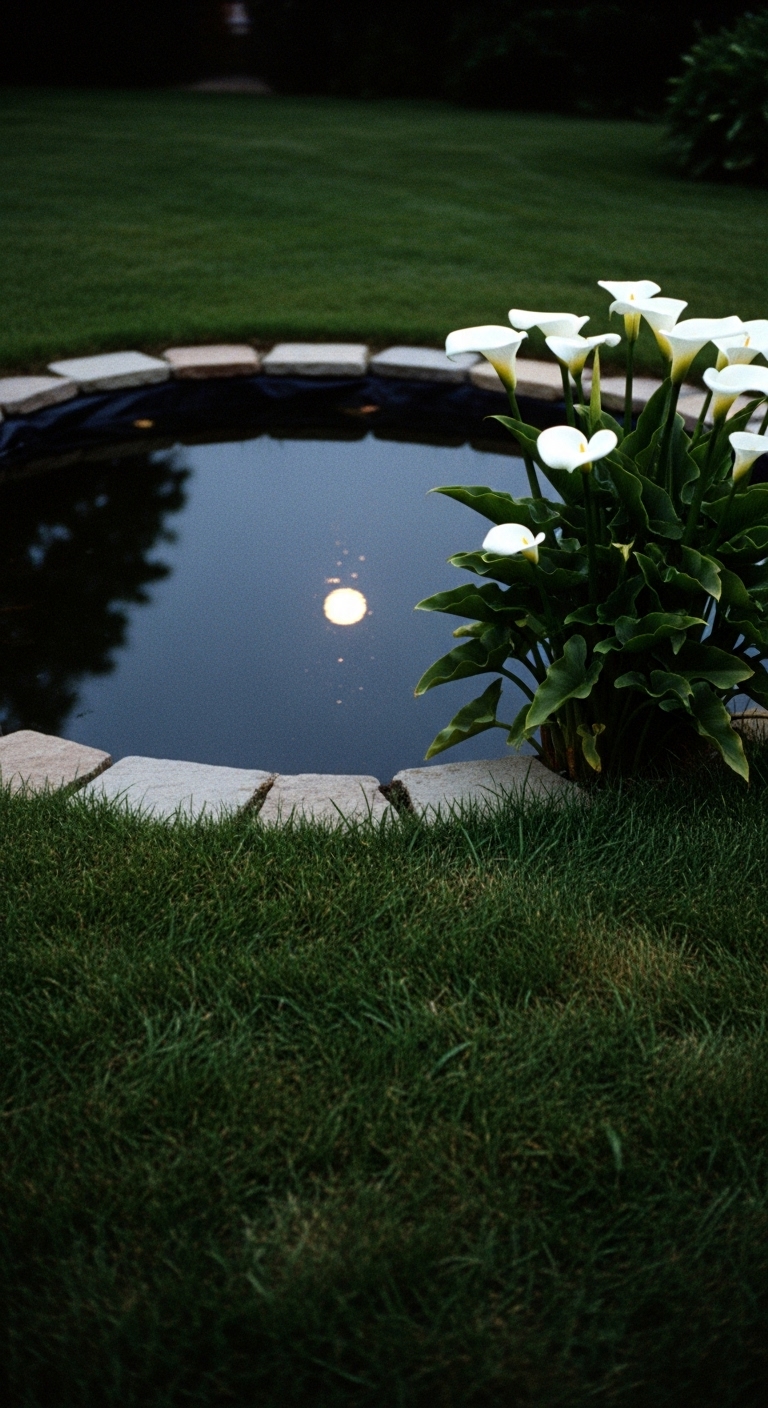
4. Artistic Moonlit Sculptures
Your moon garden can also be a gallery for art. Using garden art can add structure and interest to your nighttime design. Sculptures become focal points when flowers fade into the background. And they provide something beautiful to look at all year long. You want to choose pieces that interact with the light. Pieces that have interesting shapes or surfaces.
Look for art with metallic textures. A brushed stainless steel orb or a simple copper spiral will catch the moonlight in beautiful ways. Reflective glass sculptures can also work wonders, scattering light like jewels. Place your art where it will have some space around it. Then, plant around its base with soft, complementary plants. Wispy ornamental grasses or a low mound of pale-colored flowers will complete the scene without competing for attention.
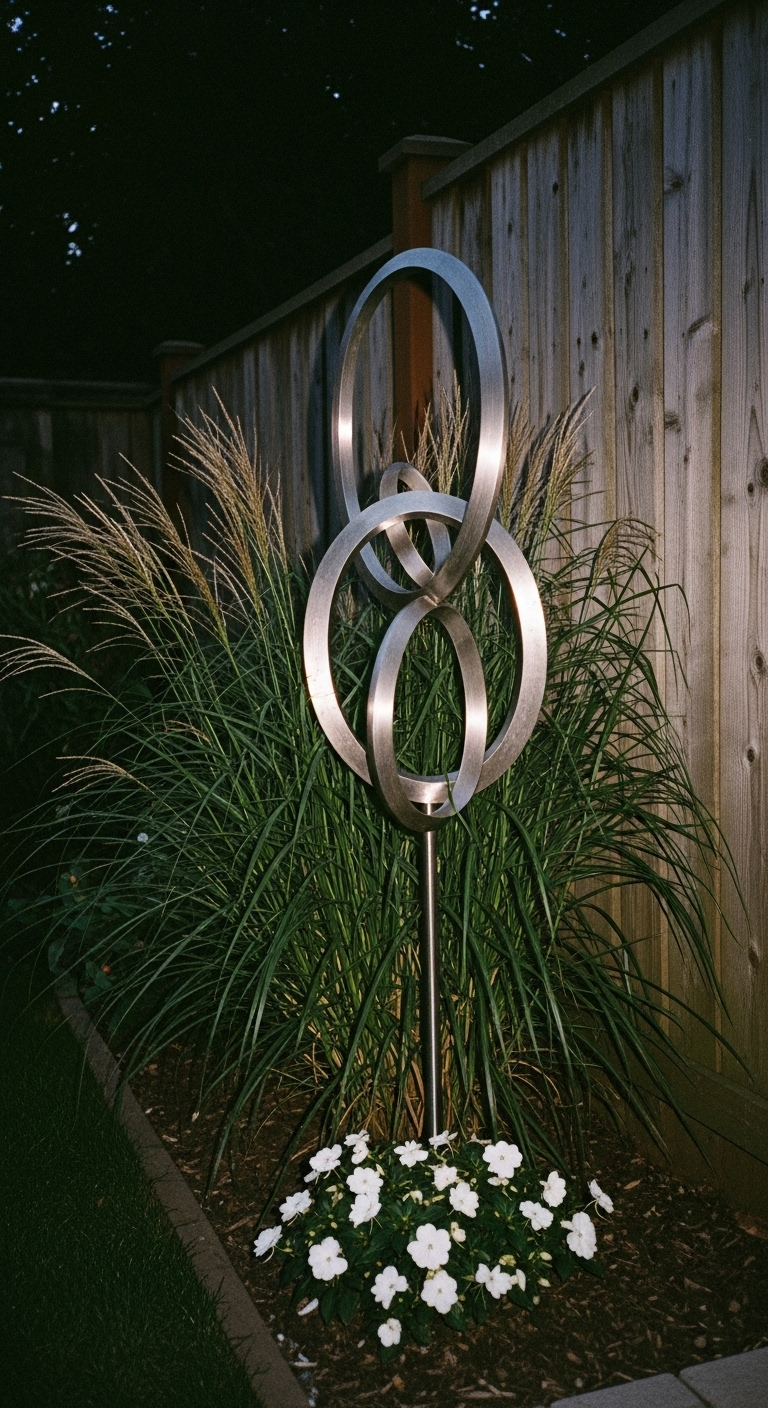
5. Minimalist Moon Garden Patio
Sometimes, less is more. A minimalist design can create a powerful sense of calm. On a patio, this means focusing on clean lines and simple forms. Forget about clutter. Let the open space be part of the design. Use planters with strong geometric shapes, like perfect cubes or tall cylinders. Paint them a simple matte white or dark grey.
The plants should also be simple and elegant. A single pot with a fragrant white jasmine climbing a simple trellis is stunning. Or you could plant a row of tall, white-flowering tobacco plants, or nicotiana. Their trumpet-shaped flowers release a heavenly scent at night. The goal is a space that feels intentional, uncluttered, and deeply peaceful. A place for quiet thought.
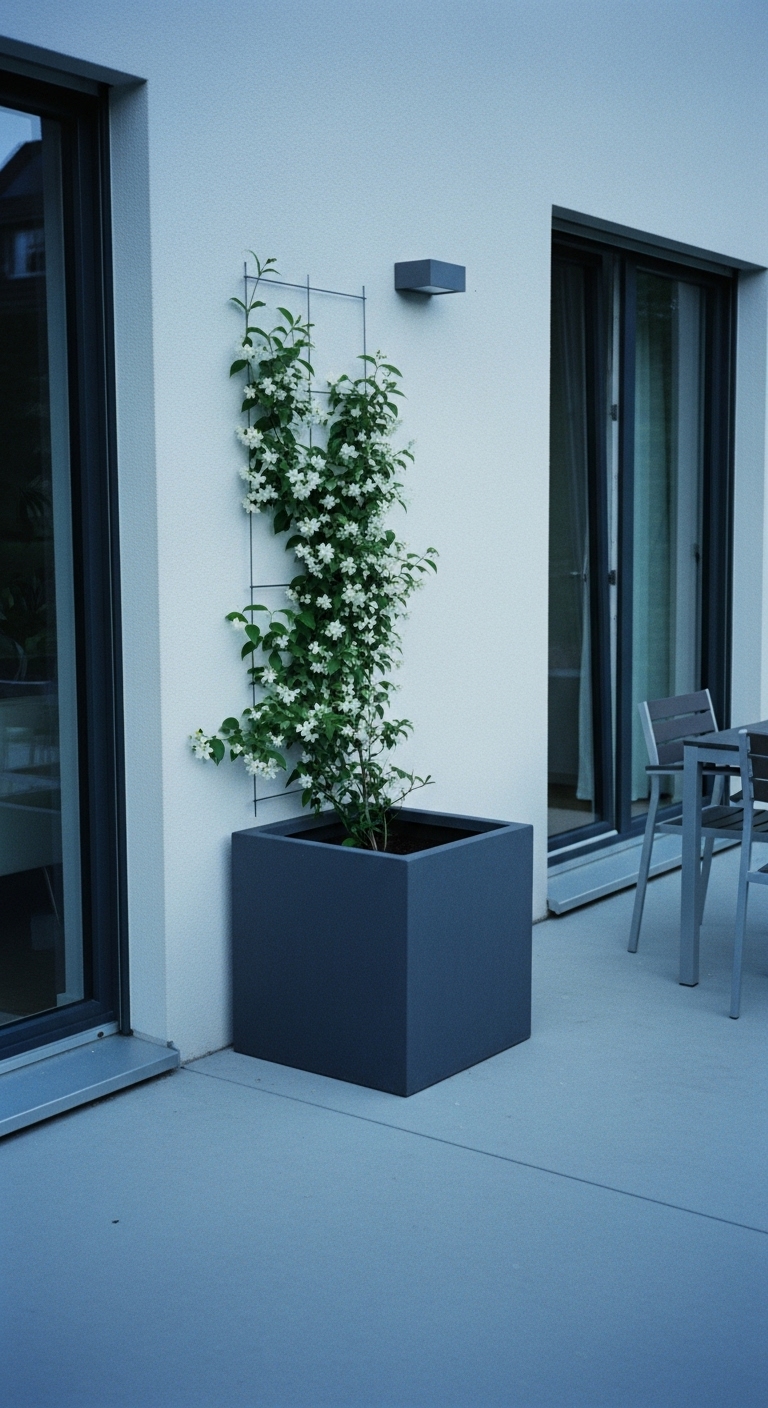
6. Sensory Moon Garden Bed
Design a garden bed that appeals to more than just your eyes. A true sensory garden for the night engages your sense of smell and touch. The best way to do this is with raised beds. Bringing the plants up higher makes them easier to interact with. You can sit on the edge of the bed and be surrounded by fragrance. You can easily reach out and touch the different textures.
Fill your bed with aromatic wonders. Night phlox has a lovely vanilla-almond scent. White lavender offers a calming aroma and interesting texture. And nothing beats the classic, rich perfume of gardenias. Mix in plants with soft, fuzzy leaves like lamb’s ear. Creating this kind of bed near a seating area makes for an immersive, relaxing nighttime experience.

7. Vintage Lunar Container Collection
Give your moon garden some personality and history. Hunt for vintage containers at thrift stores or flea markets. Old galvanized watering cans, chipped enamelware basins, or rustic metal buckets are perfect. Their worn surfaces and interesting patinas add character that you cannot buy new. Grouping several different containers together creates a charming, collected-over-time feel. It is a wonderful form of repurposing.
Plant these containers with dramatic, trailing plants. A large moonflower vine spilling out of an old washtub is a spectacular sight. Let silver dichondra, with its metallic-looking leaves, cascade from a smaller bucket. The contrast between the rustic containers and the delicate, glowing plants is magical. And it tells a unique story. Your story.
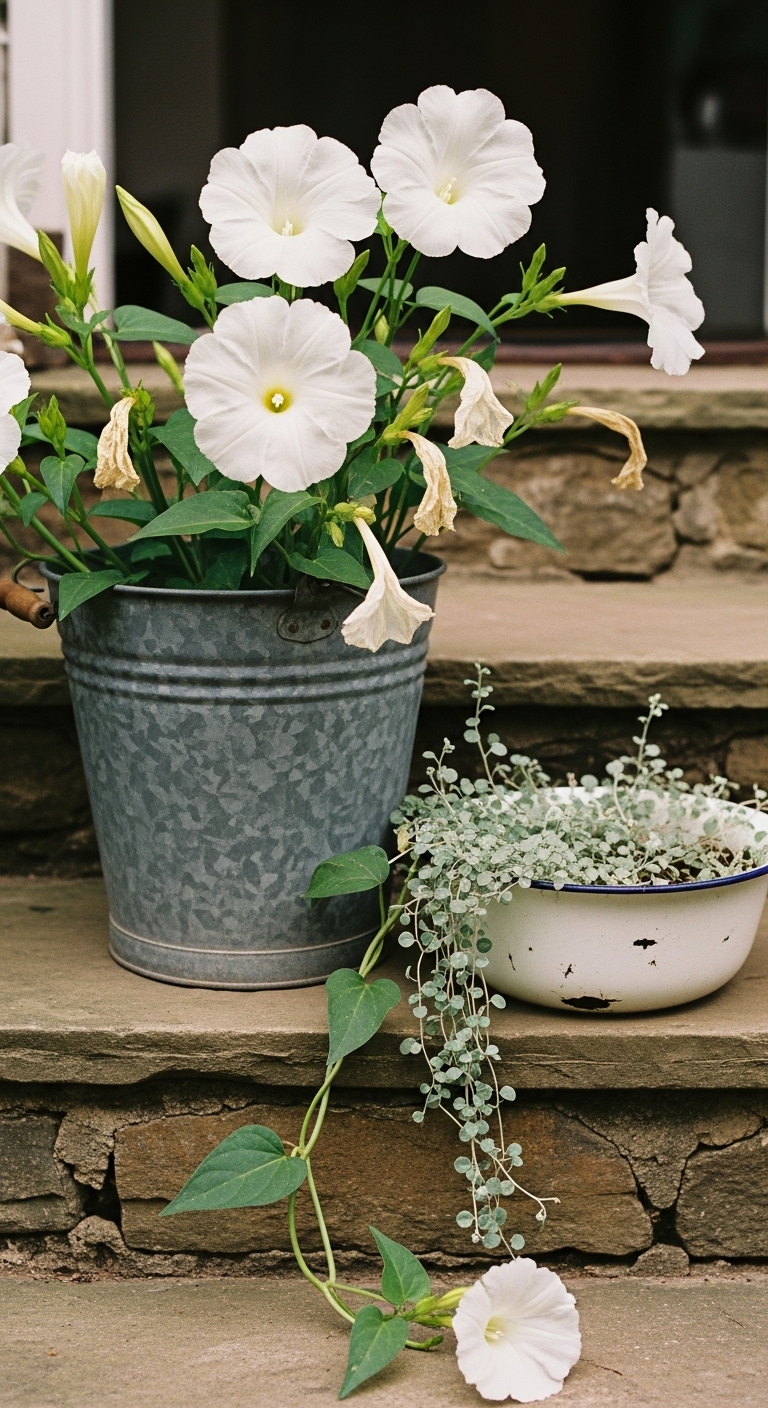
8. Lunar-inspired Topiary
Think of plants as living sculptures. Topiary, the art of clipping shrubs into shapes, can add a formal, almost magical structure to your moon garden. Forget complex animal shapes. For a moon garden, simple spherical shapes are perfect. They look like little moons scattered through your landscape. A neatly clipped globe of a silver-leafed shrub can be a stunning focal point.
Choose a shrub with small, dense leaves that takes well to shearing. A silver-leaved Teucrium or Westringia works well. Place your sculpted sphere where it can be seen from a window or patio. Then, surround its base with a ring of low-growing, luminous flowers. Pale yellow evening primrose is a wonderful choice, as its flowers open at dusk and seem to glow. The effect is elegant and surreal.
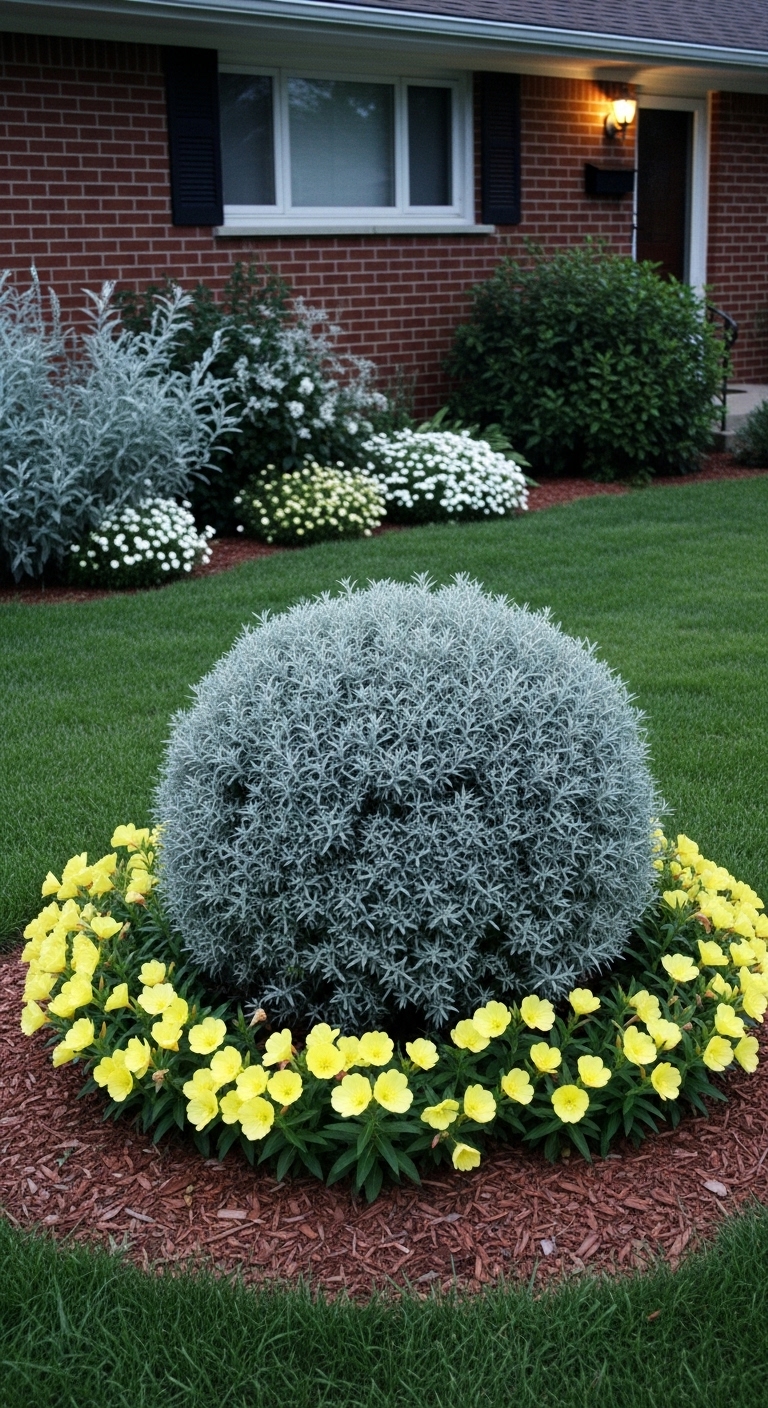
9. Industrial Moon Garden DIY
Bring a bit of urban edge to your garden. An industrial look uses raw, functional materials in a stylish way. And you can do it yourself. Using reclaimed materials for DIY containers is a creative and budget-friendly approach. Think outside the traditional terracotta pot. Cinder blocks can be stacked to create a cool, geometric planter wall. Large metal pipes can be stood on end and filled with soil.
The contrast between these hard, industrial materials and soft, beautiful plants is what makes this look work. Plant something tall and dramatic. A single stalk of white foxglove rising from a concrete block planter is an amazing sight. Its bell-shaped flowers will seem to float in the air. This style is bold. It is modern. And it is completely unique.

10. Illuminated Moon Borders
Guide the eye and the feet through your nighttime garden. Creating clear garden borders helps define the space. But in a moon garden, they can do more. They can become sources of light themselves. Use reflective materials to edge your garden beds or pathways. A thick band of white quartz gravel or tumbled white marble chips will catch and amplify every bit of moonlight.
You can also weave in subtle artificial light. A few small, low-voltage or solar-powered lights tucked into the gravel can create a soft, upward glow. This highlights the edge of the bed and illuminates the plants from below. Use accent plants with interesting shapes along this border. The spiky form of an iris or the arching leaves of a variegated hosta will create beautiful silhouettes against the glowing edge.
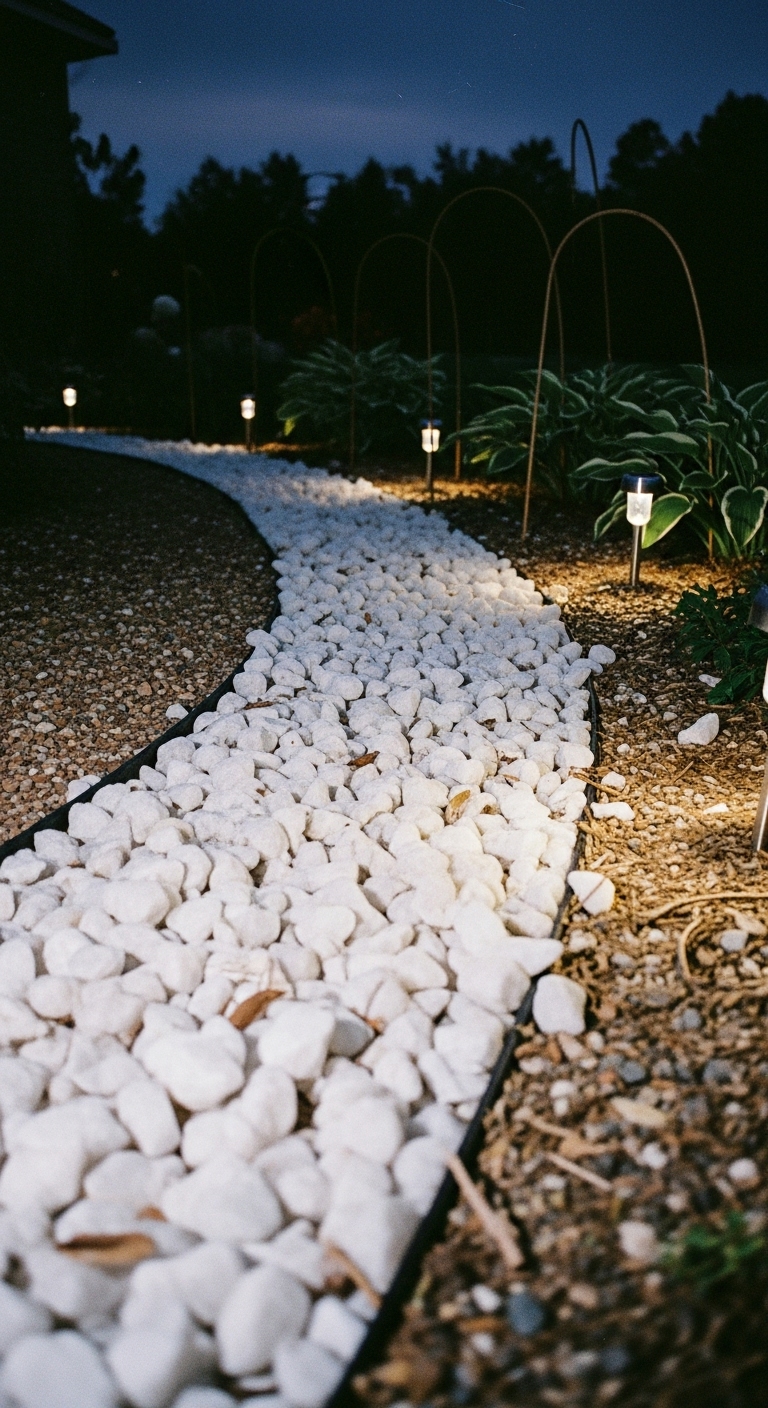
11. Zen-inspired Lunar Oasis
Create a space for ultimate peace and contemplation. A Zen garden is a minimalist landscape that uses rocks, sand, and a few carefully chosen plants to create a scene of profound tranquility. Combining this ancient practice with moon garden principles results in a truly special retreat. The key is simplicity and meaning.
Use raked white sand or fine white gravel to represent water. Place a few large, smooth, dark stones to represent mountains or islands. Keep plants to a minimum. A single, contorted dwarf pine or a clump of white-flowering mondo grass might be all you need. These subdued plants do not shout for attention. The space is about stillness. In the moonlight, the raked sand will glow, and the dark stones will hold deep shadows. It becomes a perfect place to sit and simply be.
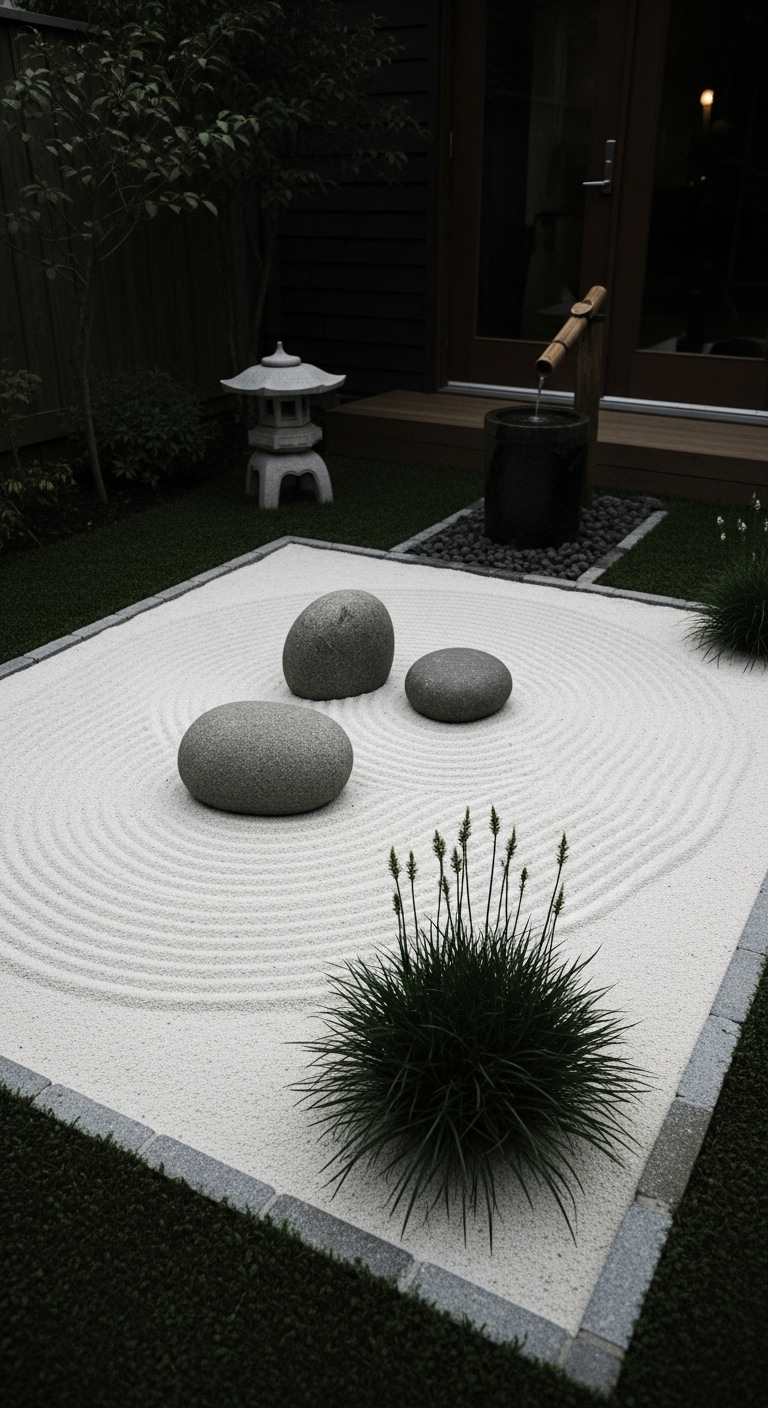
Practical Tips for Moon Gardening Success
Getting started is simple. You do not need to be a master gardener. A little planning goes a long way. The most important step is just to begin. Your nighttime garden will grow and change with you. And every stage will have its own quiet beauty.
First, find your spot. Go outside at night during a full moon. See where the light falls in your yard. That is your prime location. A place that gets direct moonlight is ideal. But even an area with bright, reflected light will work. Pay attention to how the light moves through the night.
Next, think about the basics. Most moon garden plants are not fussy. But they will appreciate good potting soil. Make sure your containers have drainage holes. Water your plants when the soil feels dry, just like any other garden. But try to water in the morning. Wet leaves at night can sometimes encourage fungus. For year-round interest, mix evergreen plants with your flowers. The silver foliage of a dusty miller or a small evergreen shrub will give your garden structure even in winter.

Enhancing Your Moon Garden Experience
Your garden is planted. The moon is out. Now it is time to truly enjoy it. A few small additions can make your nighttime sanctuary even more special. The goal is to create a space that invites you to linger. A place you want to return to night after night.
Comfortable seating is a must. You need a place to sit and soak it all in. A simple bench, a couple of weatherproof chairs, or even just a thick outdoor cushion will do. Place your seating where you have the best view and can enjoy the fragrant plants. A small table is also useful for holding a cool drink or a book.
Add another layer of gentle light. But keep it soft. String some warm-white fairy lights through the branches of a shrub. Place a few solar-powered lanterns along a path. The idea is to create small pools of warmth and glow. This light should feel welcoming, not harsh. Finally, welcome the visitors of the night. The fragrant flowers will attract beautiful moths. A small water source might invite bats, which are excellent at eating mosquitoes. This nocturnal wildlife adds another layer of life and movement to your garden.
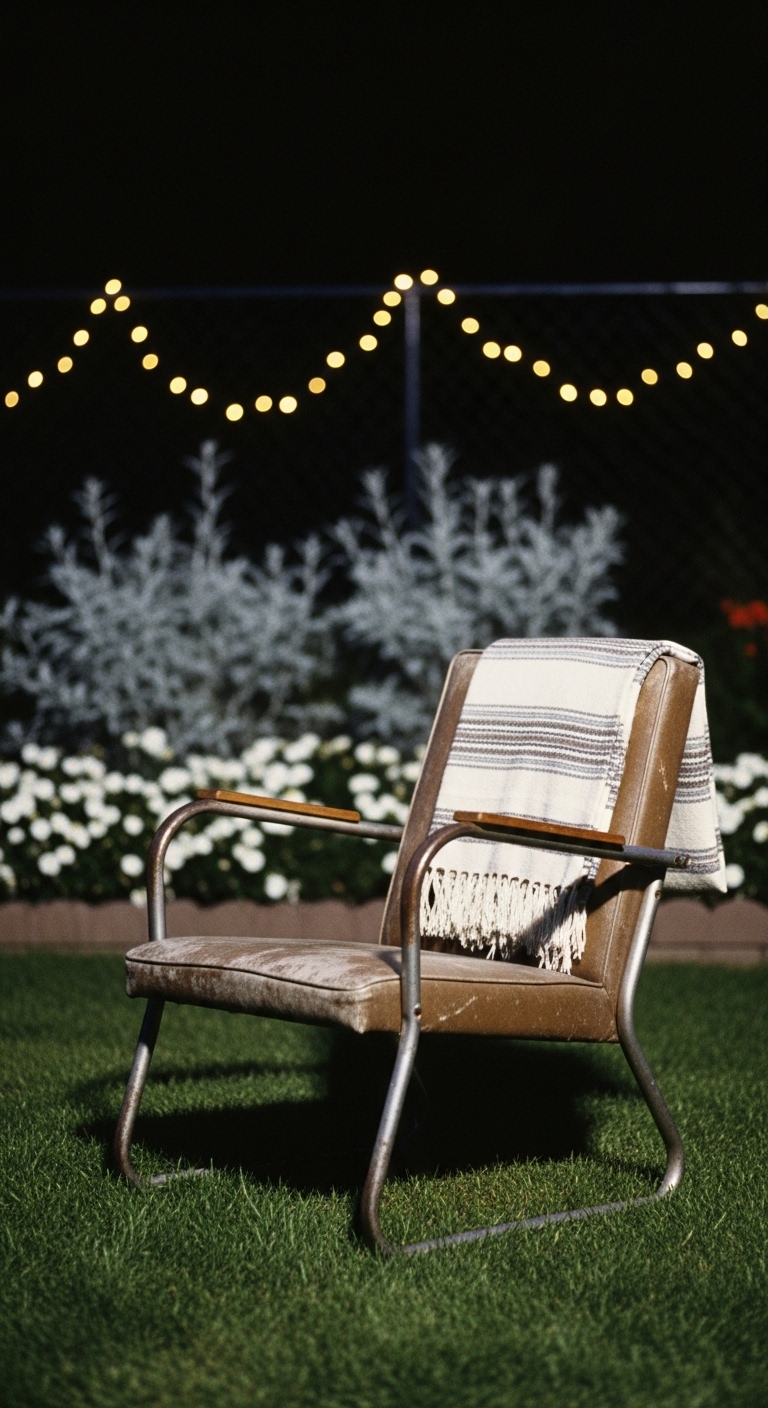
Beyond Aesthetics—Why Moon Gardens Matter
So, a moon garden is more than just pretty flowers. It is more than a clever design idea. It is a peaceful retreat from a noisy world. It is a space designed for quiet. A place to slow down, to breathe, and to reconnect. In the stillness of the night, surrounded by glowing plants and sweet scents, the stresses of the day seem to melt away.
Creating this space offers a deeper bond with the natural world. You begin to notice the cycles of the moon. You learn the names of the moths that visit your flowers. This connection can greatly enhance your mental wellness. It provides a sense of peace that is hard to find elsewhere.

So be creative. Experiment with different plants and ideas. There are no firm rules. Your moon garden should be a reflection of you. Combine your creativity with the tranquility of the night. Make a space that is uniquely yours. A personal sanctuary that comes alive when the sun goes down.
